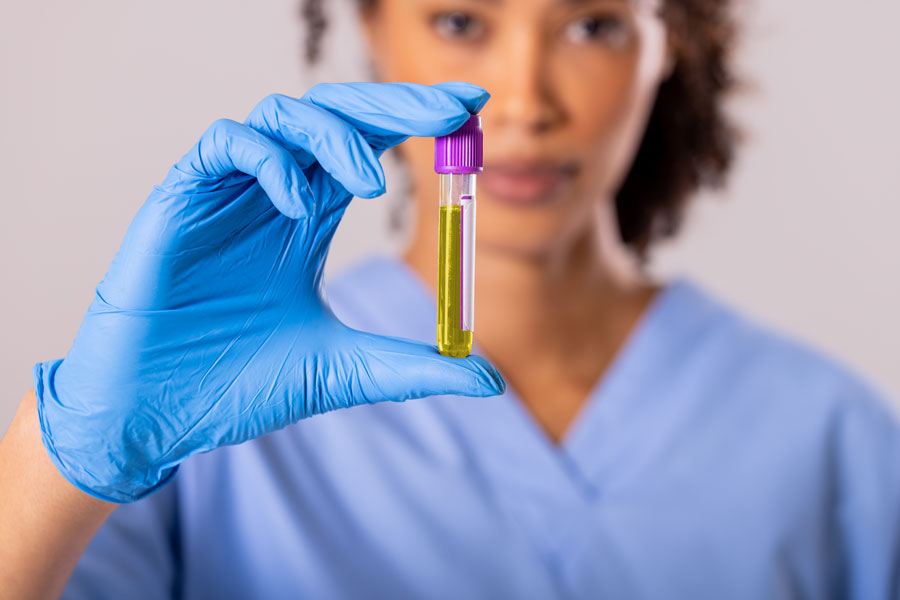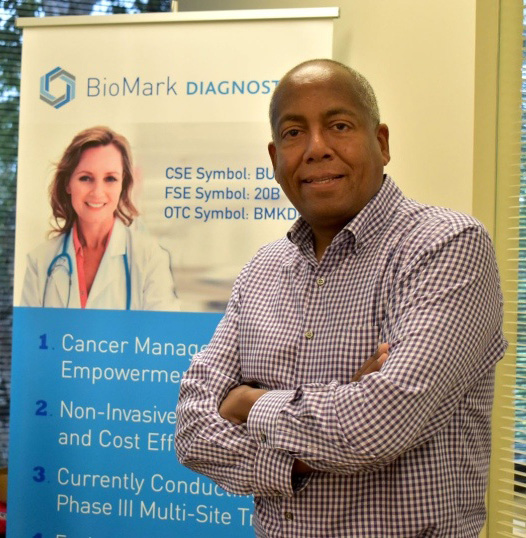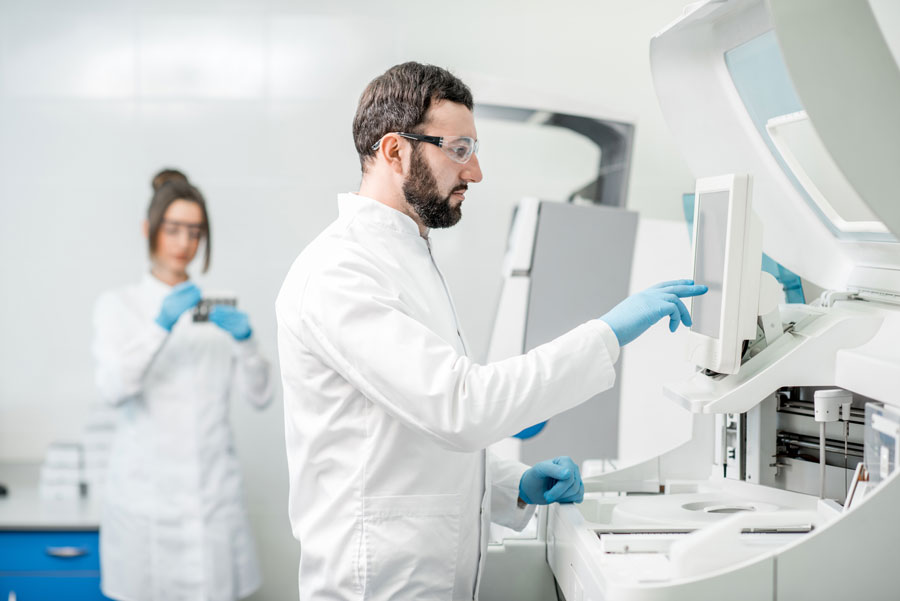The Global Breast Cancer Screening Crisis: How Liquid Biopsies Can Bridge the Divide
Breast cancer is one of the most common and deadly forms of cancer affecting women worldwide. Early detection is crucial in improving treatment outcomes and survival rates. Breast cancer screening programs have been instrumental in reducing mortality rates by detecting the disease at an early stage, when it is more treatable. In the UK, the National Health Service (NHS) has been at the forefront of breast cancer screening, with millions of women undergoing routine screenings every year.
However, recent budget cuts to the NHS breast cancer screening program in Scotland have raised concerns about the future of this life-saving service. The Scottish government has been forced to reduce spending on breast cancer screening and this has led to fears that the program may not be able to deliver the same level of service, potentially putting lives at risk.
The situation in Scotland is not unique. Low- and middle-income countries have long struggled to implement and maintain breast cancer screening programs due to limited resources and infrastructure. The cost-effectiveness of traditional screening methods, such as mammography, is a significant barrier to implementation in these countries, as reported by Cancer Research UK.
A new technology may hold the key to making breast cancer screening more accessible and affordable. Liquid biopsies, which involve analyzing a sample of blood or urine for biomarkers of cancer, have the potential to revolutionize breast cancer screening. Not only are they less invasive and more comfortable for patients, but they also have the potential to reduce costs and improve accuracy.
As the NHS and low- and middle-income countries grapple with the challenges of breast cancer screening, liquid biopsies may offer a game-changing solution.
NHS Breast Cancer Screening Cutbacks
The recent budget cuts to NHS Tayside in Scotland have sent shockwaves through the healthcare community, with breast cancer screening programs facing significant reductions.

The £58 million cut, equivalent to 9% of the total budget, has forced the health board to consider “unpalatable” options, including standing down locum breast cancer cover to reduce spending by £400,000 a year. This would result in Tayside being unable to deliver a breast screening or symptomatic service, leading to a significant number of breast cancers going undetected.
Baroness Morgan, a leading health expert, has described the potential cuts as a “devastating reminder” of the pressure on the NHS. “These cuts are a stark reminder of the challenges facing the NHS,” she said. “Breast cancer screening is a vital service that saves lives, and any reduction in funding will have serious consequences for women’s health.”
The situation in Scotland is not an isolated incident. In England, the number of women screened for breast cancer has also decreased significantly. According to recent data, there was a reduction of over 10,000 women screened for breast cancer between 2020 and 2021. This decline is particularly concerning, as breast cancer screening is a crucial tool in detecting the disease early, when it is more treatable.
The impact of these cuts will be felt most by women in rural and disadvantaged areas, who already face significant barriers to accessing healthcare services. Breast cancer screening is a vital lifeline for these women, providing them with early detection and treatment options that can save their lives. By reducing funding for these programs, the NHS is putting the lives of thousands of women at risk.
The NHS is facing unprecedented pressure, with an aging population, increasing demand, and shrinking budgets. However, breast cancer screening is a vital service that cannot be sacrificed. The consequences of these cuts will be felt for years to come, and it is imperative that the government takes immediate action to address the funding crisis facing the NHS.
Challenges in Low- and Middle-Income Countries
Breast cancer screening is a luxury that many low- and middle-income countries cannot afford. Despite the growing burden of breast cancer in these countries, implementing and maintaining breast screening programs is a significant challenge. The cost-effectiveness of traditional screening methods, such as mammography, is a major barrier to implementation in these countries. The high cost of equipment, maintenance, and trained personnel makes it difficult for low- and middle-income countries to establish and sustain breast cancer screening programs.
Resource constraints, including limited healthcare infrastructure, inadequate trained personnel, and insufficient funding, further exacerbate the challenges faced by low- and middle-income countries. In many of these countries, breast cancer screening is not a priority, and resources are often diverted to more pressing healthcare needs.
Malawi, for example, has limited resources and infrastructure to support breast cancer screening. The country has only one mammography machine, which is located in the capital city, making it inaccessible to women in rural areas. Similarly, Iran has struggled to implement a national breast cancer screening program due to limited resources and infrastructure.
Ghana, India, and China are also facing significant challenges in implementing breast cancer screening programs. In Ghana, the lack of trained personnel and limited access to mammography machines have hindered efforts to establish a national screening program. In India, the high cost of mammography and limited access to healthcare services in rural areas have made it difficult to implement a comprehensive breast cancer screening program. China, despite its rapid economic growth, still faces significant challenges in implementing a national breast cancer screening program, including limited access to healthcare services in rural areas and inadequate trained personnel.
The consequences of these challenges are devastating. Women in low- and middle-income countries are more likely to be diagnosed with breast cancer at an advanced stage, when treatment options are limited and survival rates are poor. The lack of access to breast cancer screening programs in these countries is a significant contributor to the growing burden of breast cancer, and it is imperative that international efforts are made to address these challenges.
Liquid Biopsies: A Potential Solution
Liquid biopsies, a minimally invasive and easily accessible technique, may hold the key to revolutionizing breast cancer screening. This innovative technology involves analyzing a sample of blood or urine for biomarkers of cancer, allowing for early detection and monitoring of the disease. By leveraging liquid biopsies, healthcare systems can potentially reduce the costs associated with traditional screening methods, such as mammography, which require expensive equipment and trained personnel.
One of the significant advantages of liquid biopsies is their ability to detect breast cancer at an early stage, when treatment options are more effective and survival rates are higher. This is particularly important in low- and middle-income countries, where access to healthcare services is limited, and breast cancer is often diagnosed at an advanced stage. Liquid biopsies can also reduce the need for invasive procedures, such as biopsies, which can be painful and traumatic for patients.

Biomark Diagnostics, a pioneer in liquid biopsy technology, has developed an AI-powered platform that can detect cancer biomarkers in blood or urine samples with high accuracy. This technology has the potential to transform breast cancer screening, enabling early detection and personalized treatment. BioMark presented encouraging results presented at SABCS San Antonio Breast Cancer Symposium held last December, a world premier event for breast cancer.
They have also submitted another very encouraging paper that is being reviewed for publication titled “Identifying Robust Biomarker Panels for Breast Cancer Screening.”
Another significant advantage of liquid biopsies is their ability to detect molecular treatment resistance, reducing unnecessary anti-HER2 treatment costs. HER2-positive breast cancer is a aggressive form of the disease, and targeted therapies, such as trastuzumab, can be effective in treating it. However, not all patients respond to these therapies, and liquid biopsies can help identify those who are unlikely to benefit from them. By avoiding unnecessary treatments, healthcare systems can reduce costs and improve patient outcomes.
Liquid biopsies offer a promising solution to the challenges faced by healthcare systems in implementing and maintaining breast cancer screening programs. By leveraging this technology, healthcare providers can improve accuracy, reduce costs, and enhance patient outcomes. As the technology continues to evolve, it is likely to play an increasingly important role in the early detection and treatment of breast cancer.
Conclusion

The NHS and low- and middle-income countries face significant challenges in implementing and maintaining breast cancer screening programs. Budget cuts, resource constraints, and limited access to healthcare services hinder efforts to detect breast cancer early, when treatment options are more effective and survival rates are higher.
However, liquid biopsies offer a promising solution to these challenges. By leveraging this technology, healthcare providers can reduce costs, improve accuracy, and enhance patient outcomes.
Liquid biopsies have the potential to revolutionize breast cancer screening, enabling early detection, targeted treatment, and personalized monitoring. As the technology continues to evolve, it is likely to play an increasingly important role in improving breast cancer screening outcomes globally. Therefore, we urge further research and investment in liquid biopsies to realize their full potential. By working together, we can create a future where breast cancer screening is accessible, affordable, and effective for all women, regardless of their geographical location or socioeconomic status.
Sources:
https://www.thetimes.co.uk/article/breast-cancer-screening-enforced-nhs-budget-cuts-2snkcrnmt
https://news.cancerresearchuk.org/2022/02/25/reduction-in-women-screened-for-breast-cancer-between-2020-and-2021-nhs-report-finds/
https://www.ncbi.nlm.nih.gov/pmc/articles/PMC28630/
https://www.gov.uk/government/news/new-breast-cancer-screening-units-to-speed-up-diagnosis



